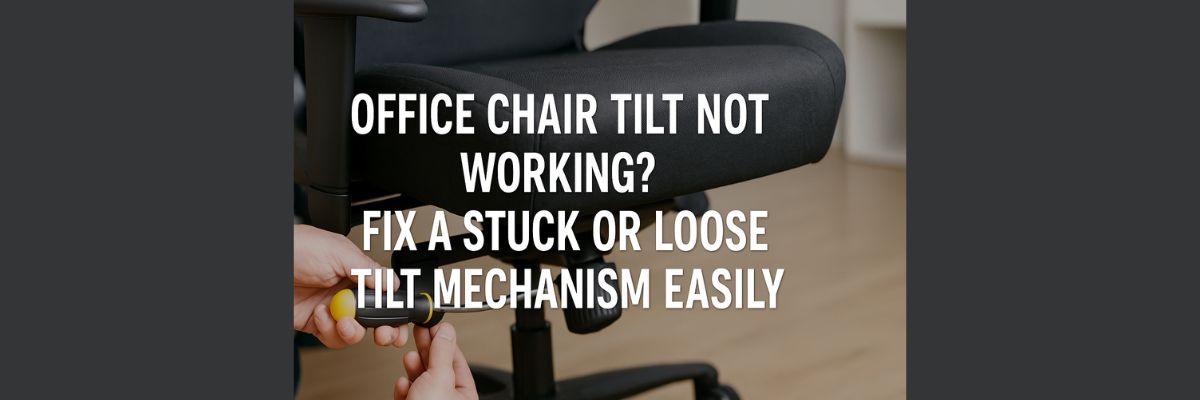A malfunctioning tilt mechanism can make your office chair uncomfortable and affect your posture. Whether the tilt is stuck, too loose, or not locking properly, this guide will walk you through how to diagnose and repair the issue step-by-step.

Common Signs of Tilt Mechanism Problems
- Chair won’t lean back or tilt forward
- Tilt function feels too loose or unstable
- Chair leans permanently without resistance
- Locking lever doesn’t hold tilt position
Tools and Replacement Parts You May Need
- Allen wrench set or hex keys
- Screwdriver set (Phillips and flathead)
- Adjustable wrench
- Lubricant spray (WD-40)
- Replacement tilt mechanism (if damaged)
- Tilt lock lever replacement (if broken)
Step 1: Identify the Tilt Mechanism Type
Turn your chair upside down and examine the metal plate beneath the seat. Most tilt mechanisms fall into these types:
- Center tilt: Basic pivot where the seat and back tilt together.
- Synchronous tilt: Seat and backrest tilt at different angles.
- Multi-function tilt: Offers more levers and tension control options.
Look for labels or model numbers, especially if you’re considering ordering replacement parts.
Step 2: Tighten All Screws and Bolts
Use an Allen wrench or screwdriver to tighten all bolts and screws connecting the tilt plate to the seat and the gas lift. A loose connection can mimic a failing mechanism and cause wobbling or misalignment.
Step 3: Inspect and Test the Tilt Lock Lever
Check the tilt lock lever under the seat. Ensure it’s not stripped, broken, or jammed. Move the lever through its full range. If it doesn’t hold position:
- Try applying lubricant spray to the pivot point and internal spring.
- If it feels loose or disconnected, it may need to be replaced.
Step 4: Adjust the Tilt Tension Knob
Locate the tilt tension knob—usually a large plastic dial under the seat. Turn clockwise to increase resistance or counterclockwise to decrease. If it’s stripped or has no effect:
- Remove the knob and inspect for cracks or a worn-out thread.
- Replace with a compatible tilt tension knob if damaged.
Step 5: Clean and Lubricate Moving Parts
Dirt, rust, or lack of lubrication can jam internal springs and joints. Use a cloth to clean off dust and debris, then apply multi-purpose lubricant to all pivot points, gears, and moving joints.
Step 6: Replace the Tilt Mechanism (If Needed)
If the internal components are cracked, bent, or completely unresponsive:
- Order a new tilt mechanism that matches your chair model and dimensions.
- Detach the existing tilt plate by unscrewing it from the seat and gas cylinder.
- Install the new unit using the original hardware or screws included with the replacement.
Safety Tip:
Always perform repairs on a stable, flat surface. Use gloves and eye protection if working with springs or tension components.
How to Prevent Tilt Issues in the Future
- Check and tighten bolts monthly
- Avoid over-tightening the tension knob
- Lubricate parts every 3–6 months
- Don’t exceed the manufacturer’s weight capacity
Conclusion
Fixing a stuck or loose office chair tilt mechanism is usually a simple process if you know where to look. By tightening bolts, lubricating moving parts, and replacing worn components, you can restore full functionality and comfort. Keep your chair well-maintained and it will serve you reliably for years.


